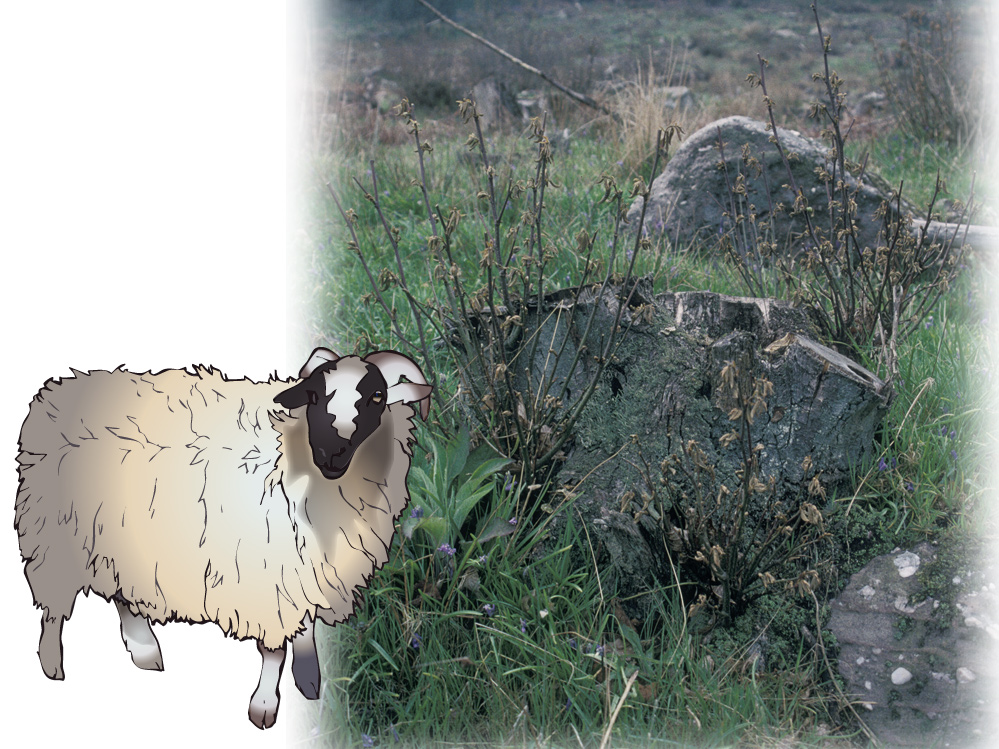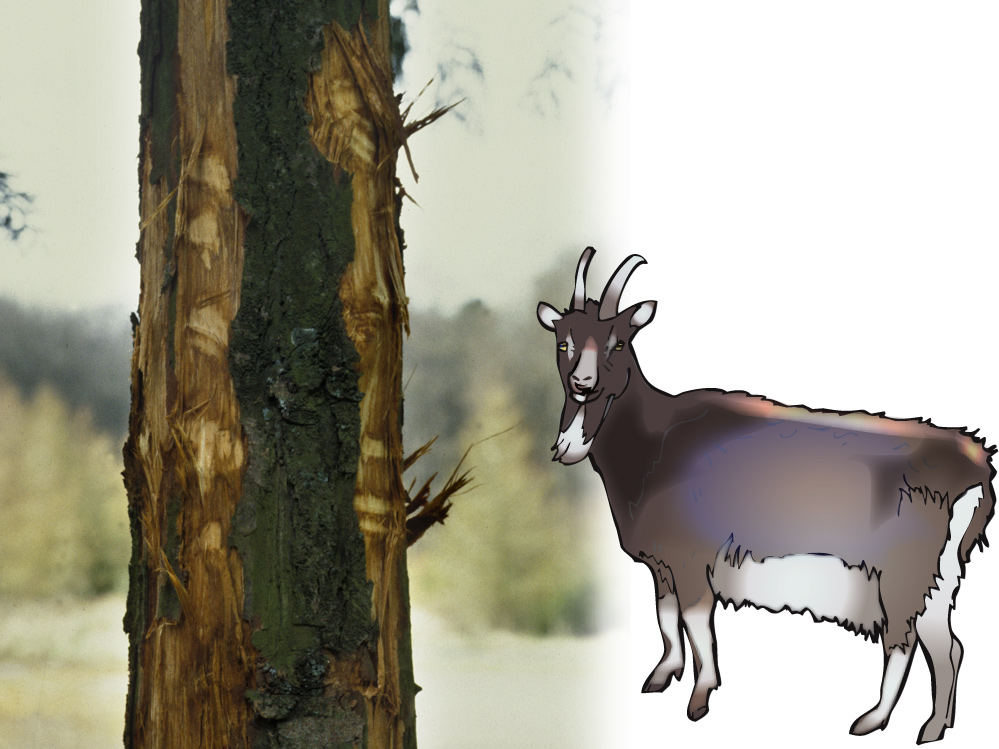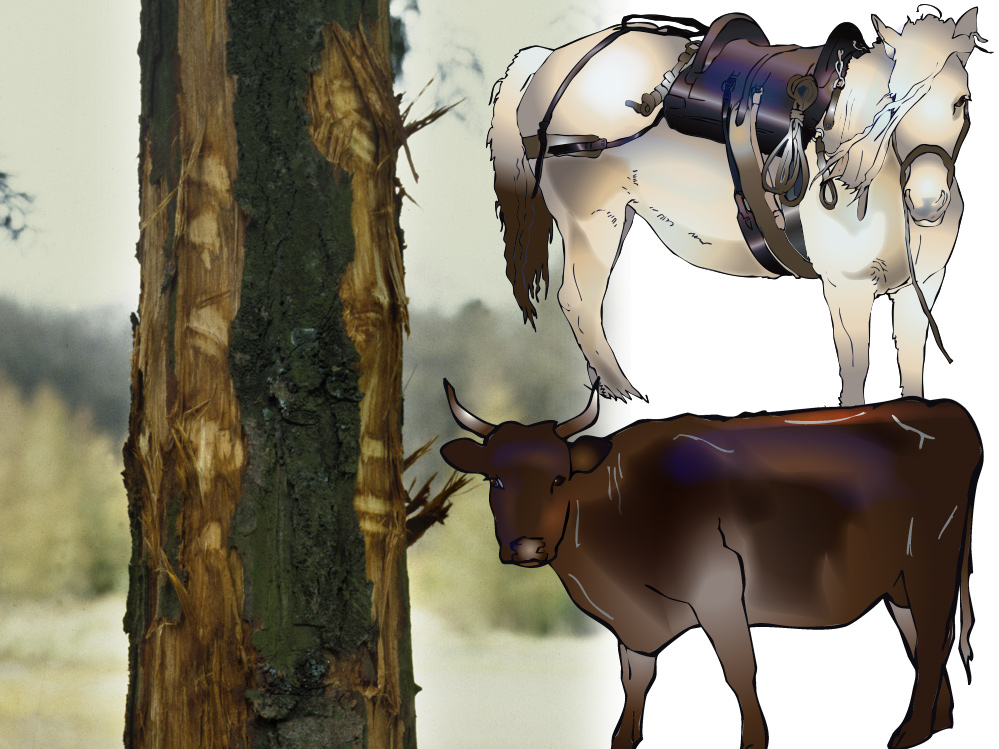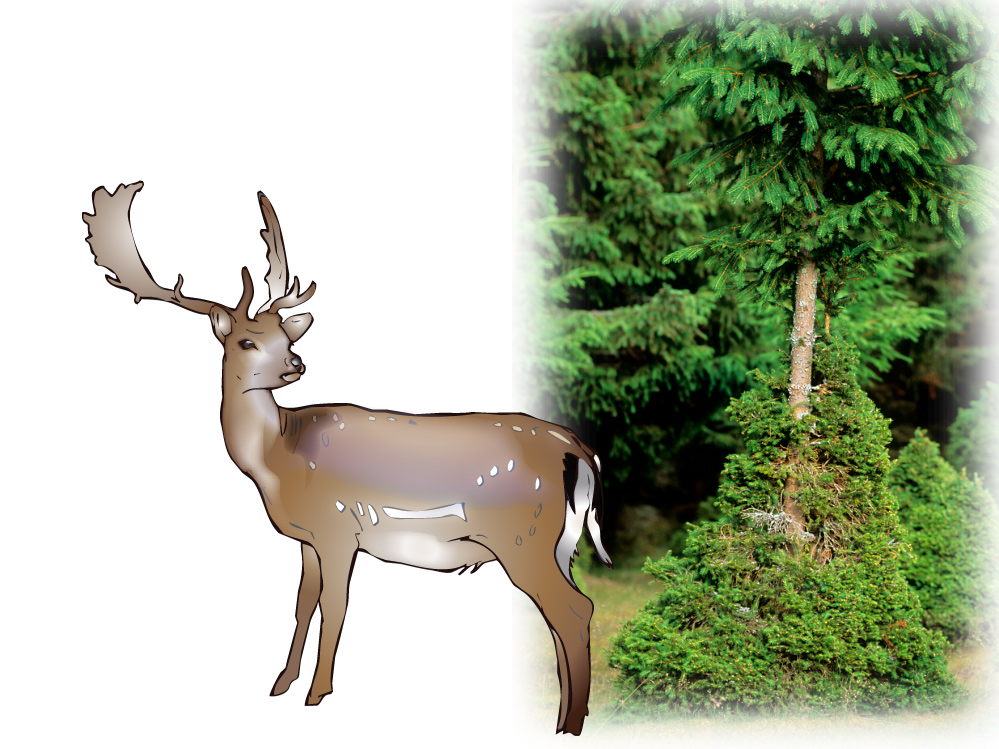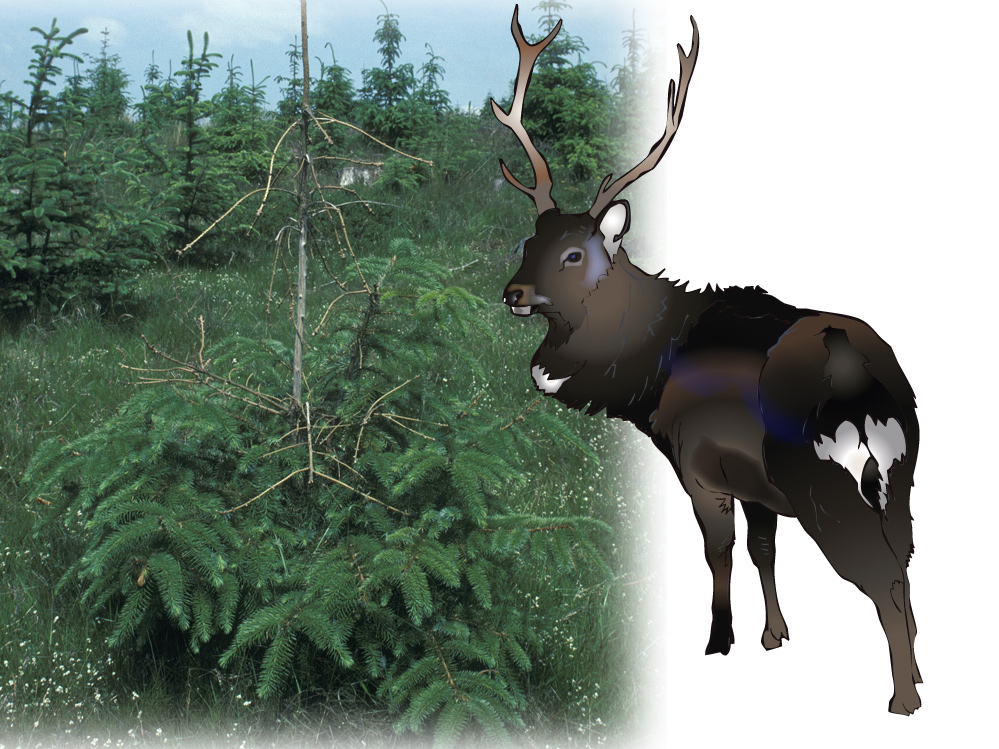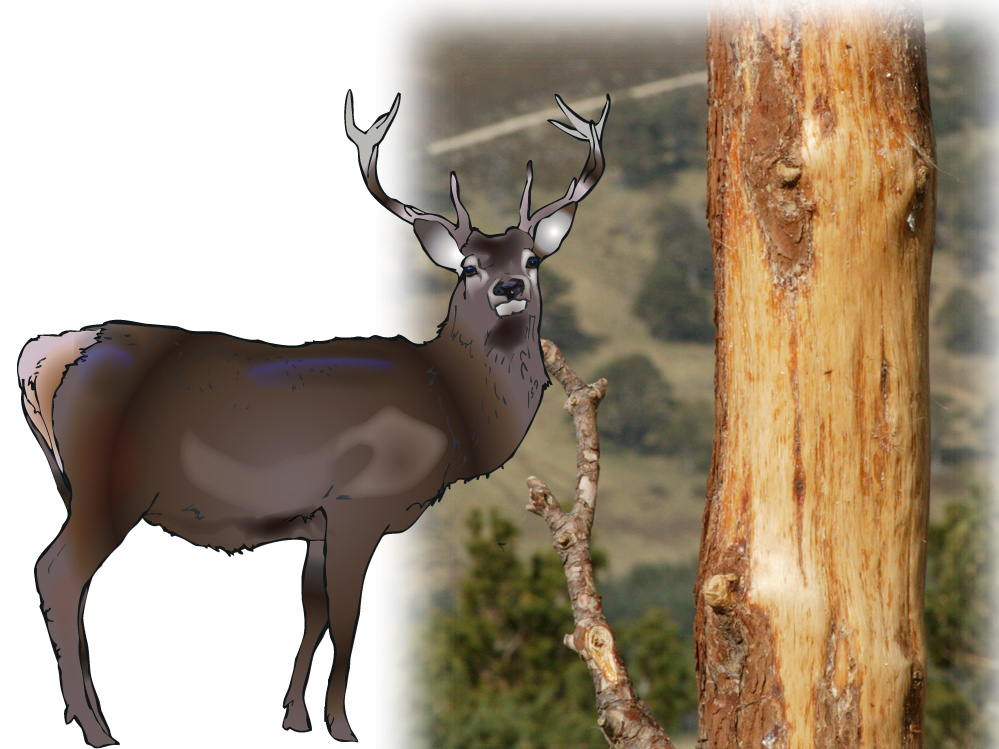Recognition of cause
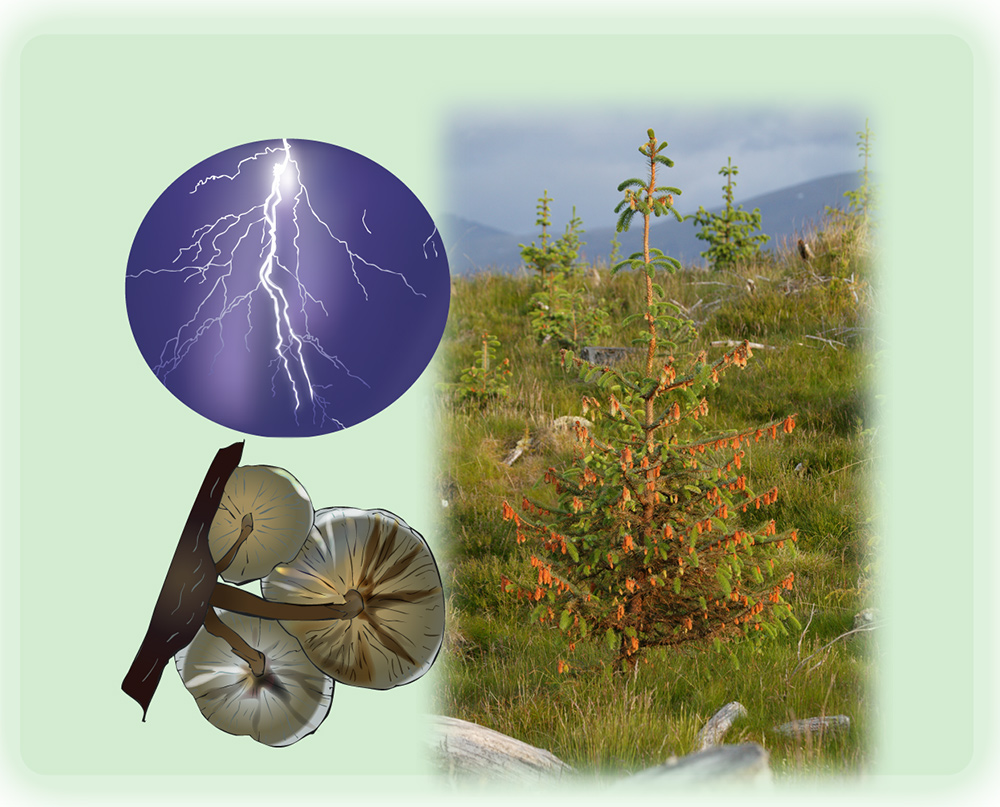
Signs of environmental damage: Trees may be damaged or stressed by a range of environmental factors including water-logging, nutrient deficiency, frost damage, lightning strikes and drought.
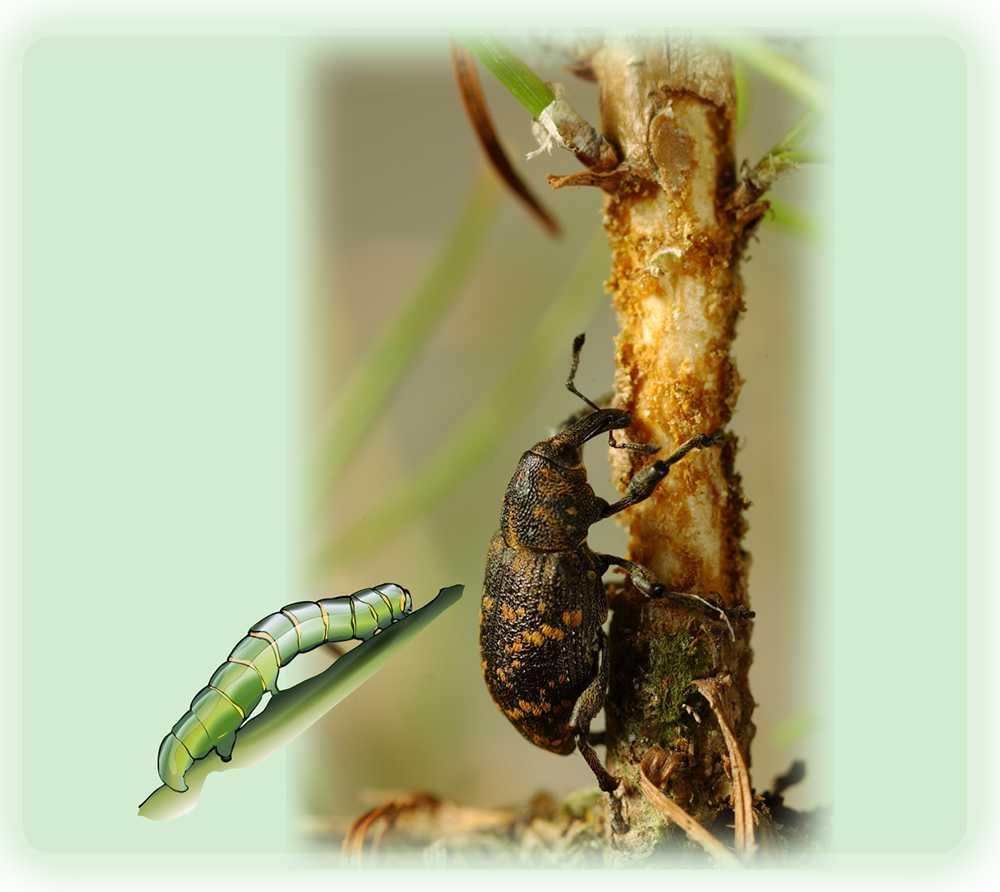
Signs of insect damage: Main species affecting trees are large pine weevil on restocking sites, common weevil on ex farmland planting sites, aphids and moth larvae. Can all cause damage usually by defoliation.
Aim
Woodlands may be susceptible to a number of damaging agents. Identifying the cause of damage at an early stage is important, before the impacts become an expensive or ecological problem. The aim of this guide is to provide information to help with the identification process.
Recognising causes of damage
The following steps may help in assessing damage:
A. Read the signs. In most cases the causes will be apparent on close examination. Some knowledge of site history will be useful.
B. If in doubt, use the questions below to help identify potential causes.
C. Check the individual descriptions to confirm damage type and assess the potential extent of the effects of the damage depending on the age class of tree (i.e. seedling, sapling, mature).
| No. | Question | Y/N | Go to |
|---|---|---|---|
| 2 | Is seedling foliage brown, yellow or shrivelled ? | Y: | environmental |
| N: | 3 | ||
| 3 | Has bark been removed? | Y: | 4 |
| N: | 8 | ||
| 4 | Are teeth marks visible on close inspection? | Y: | 5 |
| N: | 6 | ||
| 5 | Size of teeth marks 1-2 mm | voles | |
| Size of teeth marks 3-4 mm | rabbits | ||
| 6 | Has bark been rubbed off ? | Y: | deer |
| N: | 7 | ||
| 7 | Has bark been removed without any marks on underlying wood? | Y: | insects (large pine weevil) |
| N: | other signs? | ||
| 8 | Have leaves and small shoots been eaten? | Y: | 9 |
| N: | 12 | ||
| 9 | Are severed ends at a sharp angle and clean cut? | Y: | 10 |
| N: | 11 | ||
| 10 | Have severed shoots been left uneaten? | Y: | hares |
| N: | rabbits | ||
| 11 | Do severed shoots have a ragged end? | Y: | large herbivore |
| N: | other signs? | ||
| 12 | Have only needles or leaves been eaten? | Y: | normally insects |
| N: | birds |
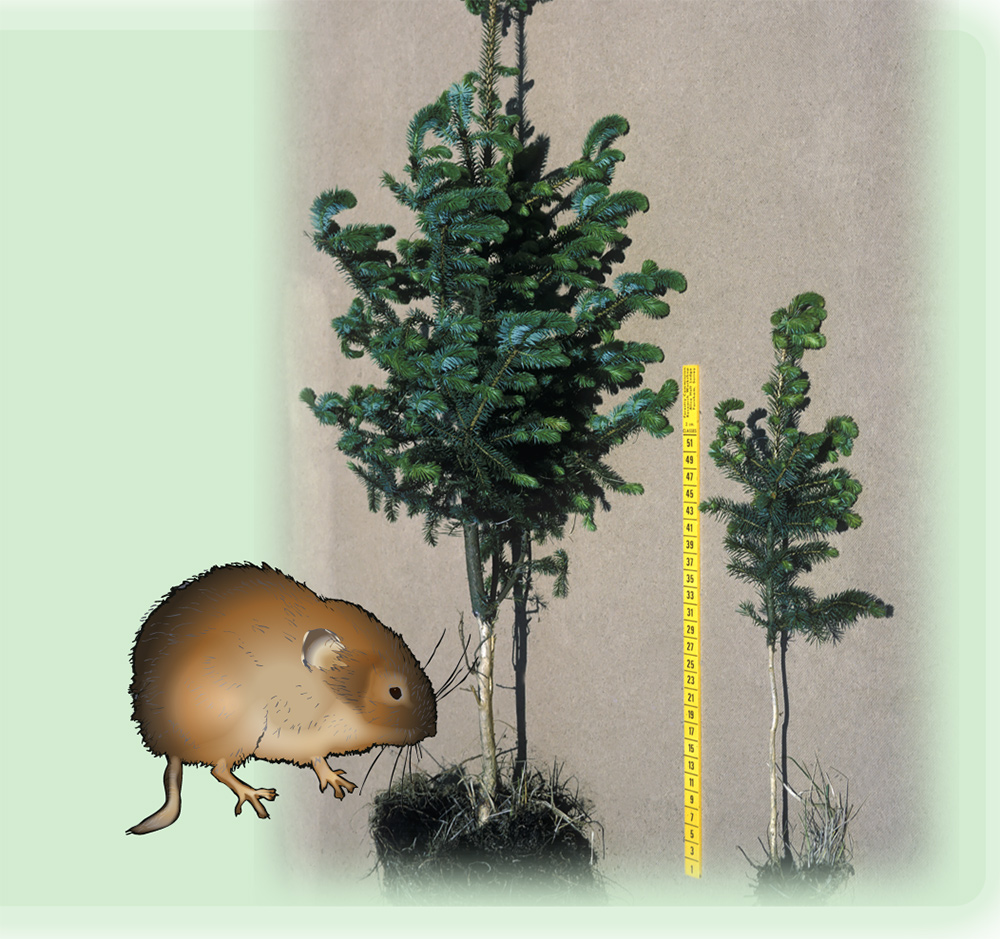
Bank vole: Signs: Vole runs can be seen when grass is cut or after snow has melted.
Damage description: Removes bark of young trees and shrubs below level of surrounding vegetation. May cause damage higher up stem when snow provides cover.
Currently bank voles are only found in the southern part of the country where they are impacting on young trees in commercial woodlands
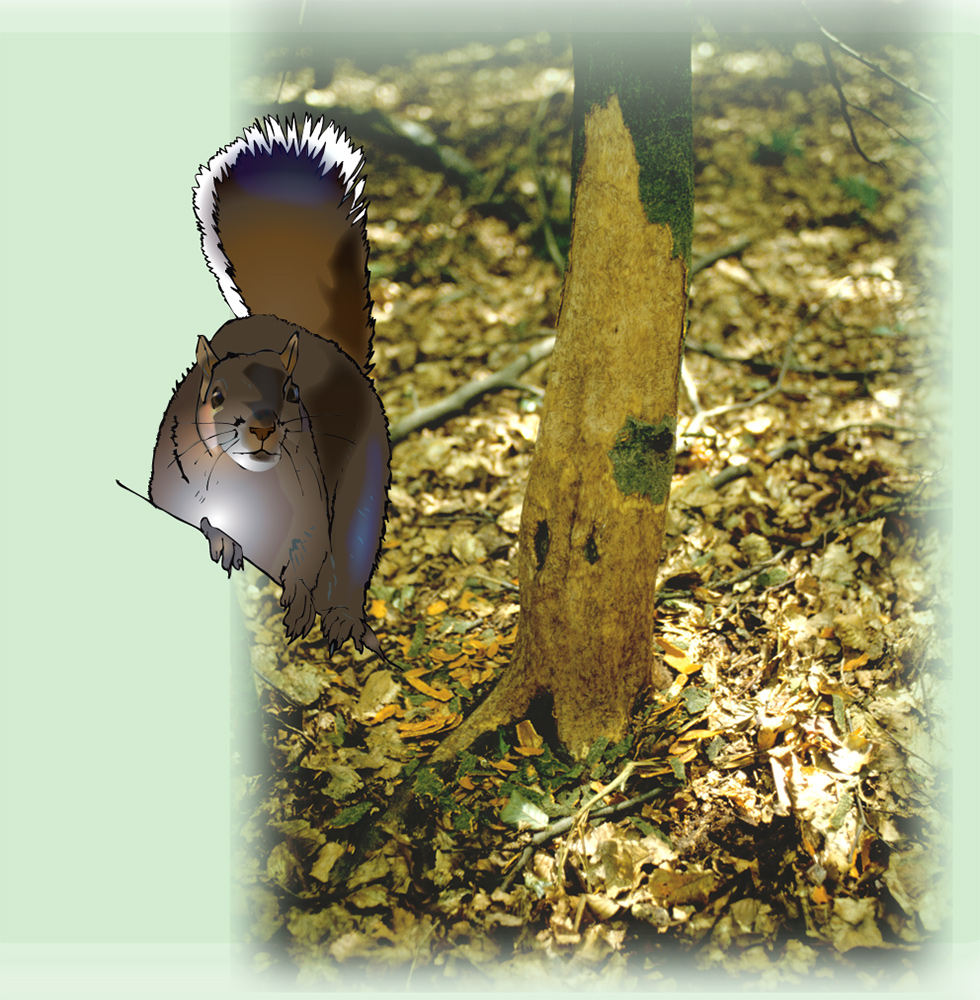
Squirrels can strip bark at a range of heights. Damage at base of tree can be similar to rabbits. Bark removed higher up stem will tend to be 1-2cm wide and several cm long.
Of the two species found in Ireland the grey squirrel has the greatest impact on woodland
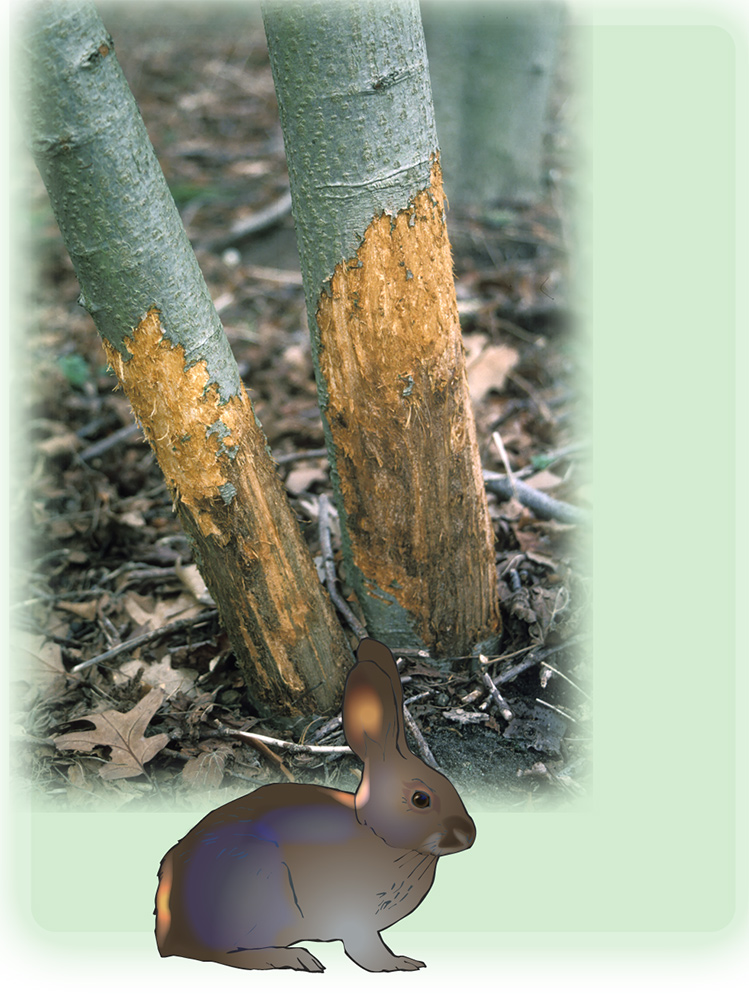
Signs of rabbit damage include rounded and fibrous droppings, often deposited in latrine areas in high numbers. Burrows and freshly dug earth often visible.
Damage description: Browses young trees – stems cut cleanly at a sharp angle. Bark stripping on young trees and on thin barked mature trees. Damage usually no more than 0.5m high but can be higher if snow cover allows higher access.
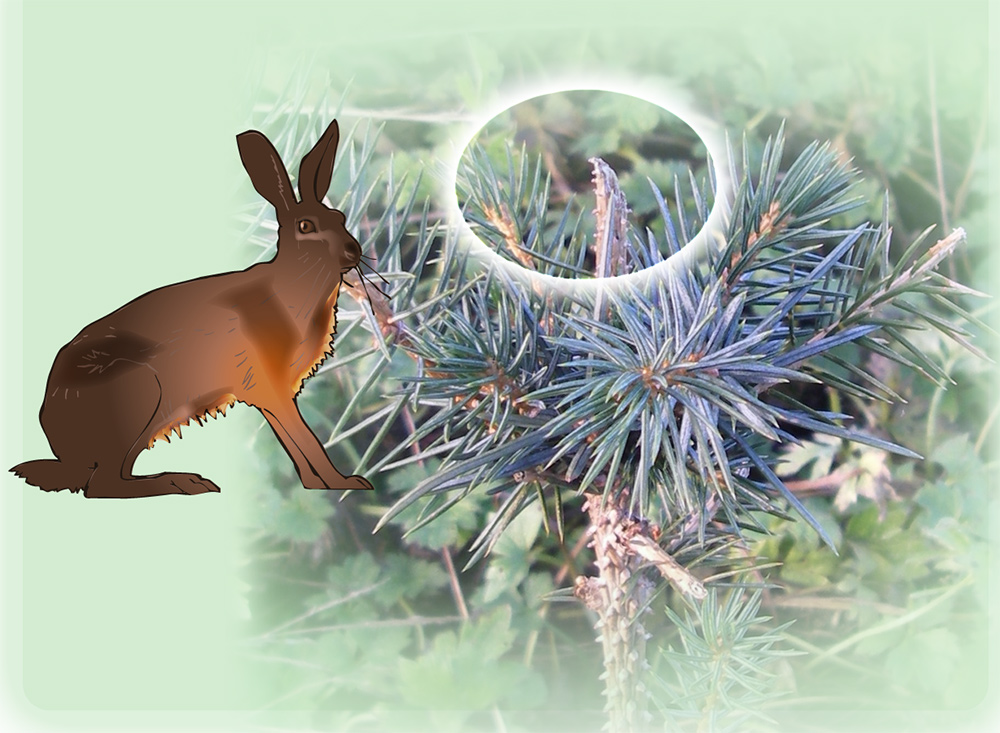
signs of Hare damage might be rounded and fibrous droppings larger than rabbit droppings. Damage description: Browses young trees – stems cut cleanly at a sharp angle. Cut stem usually left uneaten.
| No. | Question | Y/N: | Action |
|---|---|---|---|
| 13 | Has bark been removed? | Y: | 14 |
| N: | 19 | ||
| 14 | Are teeth marks visible on close inspection? | Y: | 15 |
| N: | 18 | ||
| 15 | Size of teeth marks : 1-2 mm | voles | |
| 1.5mm | squirrels | ||
| 3-4 mm | rabbits | ||
| more than 4 mm | Y: | 16 | |
| 16 | Which direction do teeth marks run? | ||
| Vertically | Y: | deer (see over) | |
| Diagonally | Y: | 17 | |
| 17 | What height does damage extend to? | ||
| 1.5mm | sheep or goats | ||
| 2mm | cattle or horses | ||
| 2.5mm | horses | ||
| 18 | Has bark been rubbed off ? | ||
| above 1m? | deer (see below) | ||
| 19 | Have lower branches been browsed? | Y: | 20 |
| 20 | Height to which branches are browsed | ||
| 0.6m | rabbits | ||
| 1.5m | goats or sheep | ||
| 1.8m | red, sika, fallow | ||
| 2m | cattle/horses | ||
| 2.5m | horses | ||
| 21 | Has bark been removed? | Y: | 22 |
| N: | 27 | ||
| 22 | Are tooth marks visible on close inspection? | Y: | 23 |
| N: | 26 | ||
| 23 | Size of teeth marks | ||
| 1.5mm | squirrels | ||
| 3-4mm | rabbits | ||
| Size of teeth marks more than 4mm | Y: | 24 | |
| 24 | Which direction do teeth marks run? | ||
| vertically? | Y: | deer (refer below) | |
| diagonally? | Y: | 25 | |
| 25 | What height does damage extend to? | ||
| 1.5m | sheep/goats | ||
| 2m | cattle/horses | ||
| 2.5m | horses | ||
| 26 | Has bark been rubbed off between 0 and 0.5m? | ||
| above 1m | Y: | deer species | |
| 27 | Have lower branches been browsed? | Y: | 28 |
| 28 | Height to which branches are browsed | ||
| 0.6mm | rabbits | ||
| 1.5m | sheep/goats | ||
| 1.8m | red/sika/fallow | ||
| 2m | cattle/horses | ||
| 2.5mm | horses | ||
| 29 | Is ground heavily poached? | Y: | cattle (likely) |
